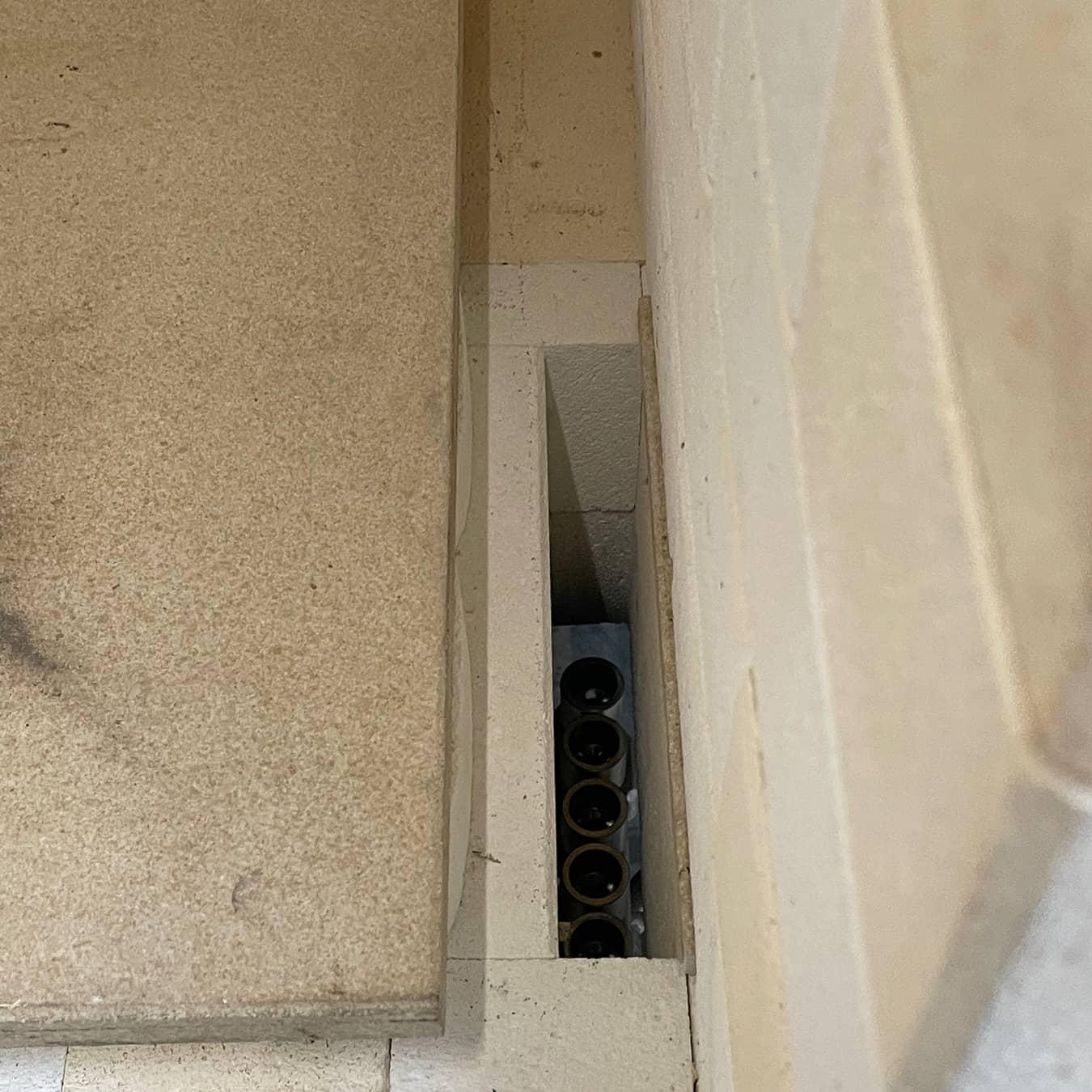

















GFL 186
A very substantial hand finished 6mm reinforced frame work. A robust foundation for longevity.
A well rated, floor mounted front loading of down draught design.
Cool sides, allowing the frame to breathe and minimising condensation within the kiln, thus again adding to life expectancy.
All brickwork proud thus protecting steel work, again aiding longevity.
Traditional time proven arched ceiling.
146 mm of premium insulation, 1400°C brick to hot face, premium high efficiency backup insulation.
1550°C brick work to damper ports.
R type .25mm thermocouple.
Hand held battery operated digital pyrometer.
Chequered sunken base exhaust channel for even heating and additional control.
Door hinged left or right (as you look at the kiln) opening to 180° to allow easy access.
Rich quality textured paint finish in any colour of your choice?
4 layer kiln furniture set.
(size dependant so up to 18 cu.ft. Gas train complete with 3 meters of metal braided hose to variable reg and pressure gauge.
Manually control burners with quality fittings plumbed neatly beneath the kiln. Gas train comprises of isolation valve, fine control valve pressure gauge and flame failure to the burner.
Integral
Ergonomic design, with your choice of heath height for comfortable loading.
Manual angled damper, choice of position high or low on the flue.
2 year guarantee.
The difference between a gas kiln and an electric kiln is considerable for several reasons. We have come to expect electric kilns to almost be automatic, we load them utilising all the internal space, set the controller to run and come back 24 hours later to unload the fired pots, almost like a magic box.
Whereas the gas kiln has a load space substantially smaller than the actual internals of the kiln as we need to allow space for the flame to circulate the load or pots to be fired. This generally means that for a load space of the same size a gas kiln is bigger so more expensive as the kiln itself is physically bigger by some 25 to 30%. A gas kiln requires a dedicated chimney to outside, a gas supply plumbing in and connecting.
An electric kiln can be placed in a space/room with some ventilation and of course the correct power source fitted by a qualified person and we can be firing in very short order. Load the kiln, press the start button and away we go, comeback in 24 to 30 hours. . . and see some amazing results.
A gas kiln is often manual as the automation costs are considerable and there is an element of tradition in firing "by hand" that suits the craftsperson concept. Often a gas kiln will be set on a very low setting but enough to keep the flame failure lit, candling this is called which allows a slow warm up, turn the gas up a little and apply a small amount of damper so that all the heat isn't being wasted, periodic trimming, more gas as per the desired climb to temperature, would bring the kiln up to temperature and a more involved relationship withe the kiln to achieve the desired reduction and top temperature.
From £9,108 + delivery (inc VAT)
Technical Data
Actual Internals (inches) | 22.5 x 22.5 x 22.5 (W x D x H) |
Internals (mm) | 572 x 572 x 572 (W x D x H) |
Kw | 18 |
BTUs | 61000 |
Cu ft | 6.6 |
Litres | 186 |
Usuable internals (inches) | 18 x 18 x 18 (W x D x H) |
Flue (squared) | 10 |
